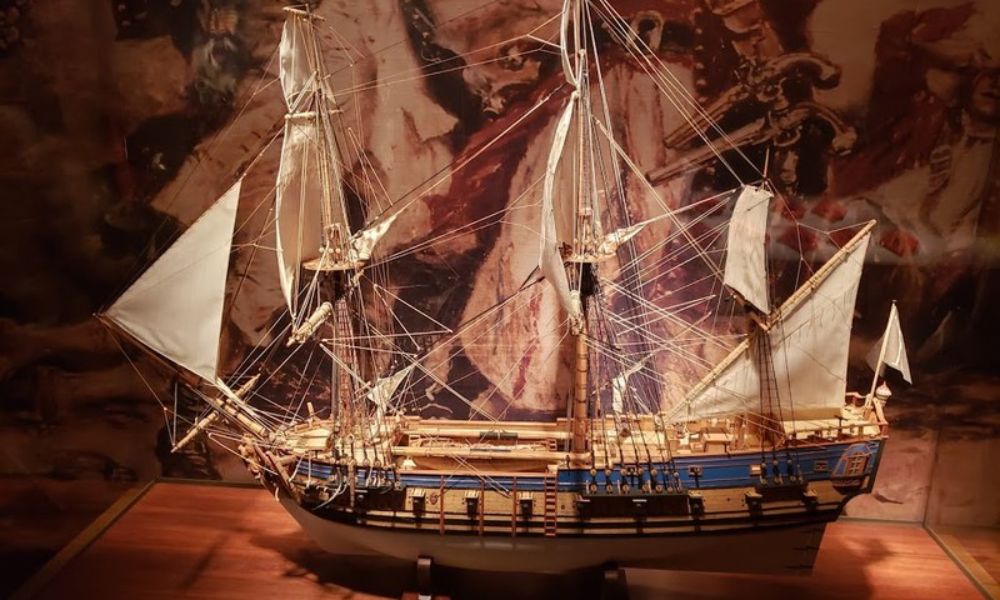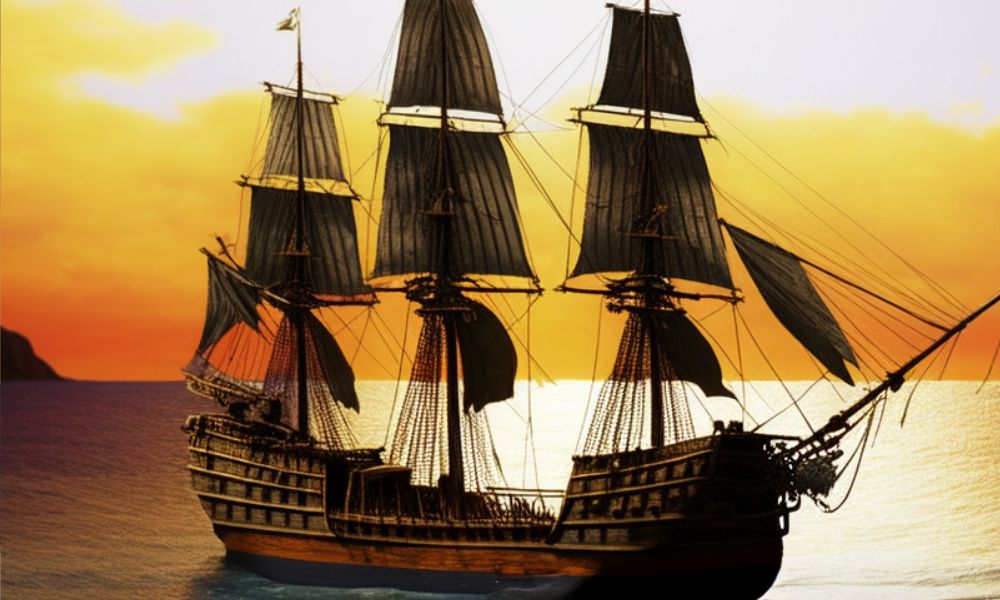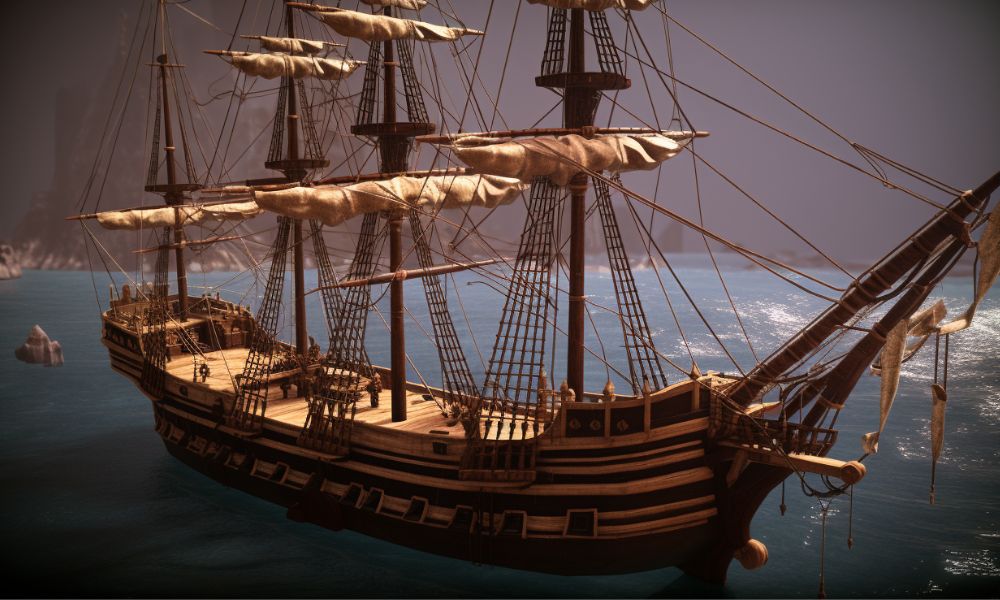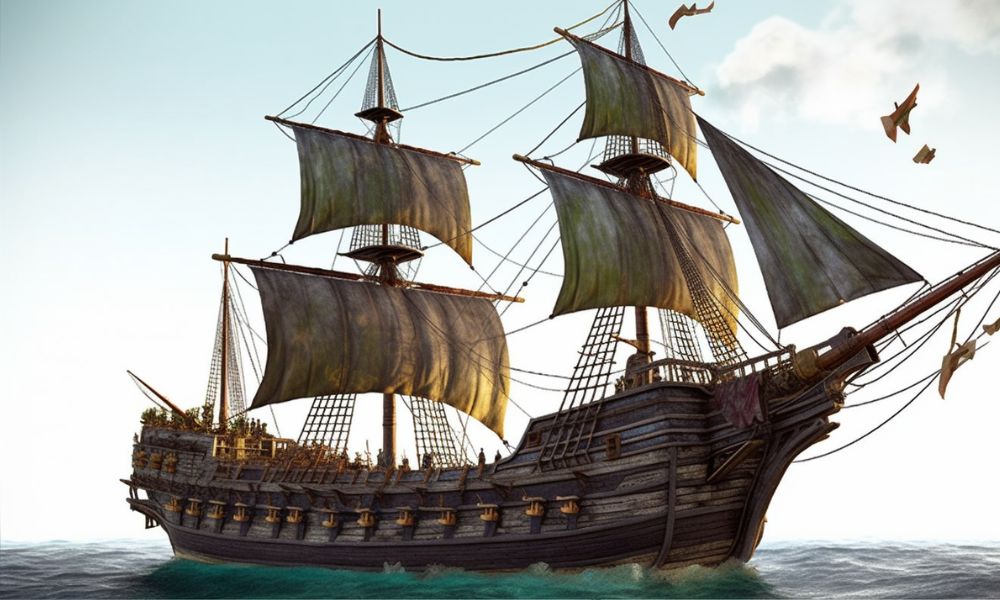Introduction
Ahoy, mateys! Prepare to set sail on a journey through the history of the high seas as we explore the tales of the most notorious and legendary pirate ships that ever sailed. From the Caribbean to the Indian Ocean, these ships struck fear into the hearts of sailors and amassed great fortunes for their infamous captains. So grab your cutlass and tricorn hat, and let’s delve into the world of swashbuckling adventure!
The Golden Age of Piracy
The Golden Age of Piracy was a period from the late 17th century to the early 18th century when piracy flourished in the Caribbean Sea, along the American eastern seaboard, the West African coast, and the Indian Ocean. During this time, pirates were a dominant force, raiding merchant vessels, taking hostages, and striking fear into coastal communities.
The Caribbean and Atlantic Piracy
The Caribbean was a hotbed of piracy during the Golden Age. The region’s numerous islands and hidden coves provided perfect hideouts for pirates. The lucrative trade between Europe and the New World made the area a prime target for pirates seeking wealth. English, French, and Dutch privateers, initially employed by their governments to harass enemy shipping, often turned to piracy when their commissions ended.
The Indian Ocean and West African Coast
In the Indian Ocean, pirates preyed on the rich trade routes between India, Southeast Asia, and the Arabian Peninsula. Pirates operating in the region were a mix of Europeans, Africans, and Asians. The West African coast saw increased piracy as European powers established trading posts and forts along the coastline. Pirates targeted the valuable cargo of gold, ivory, and slaves that passed through these waters.
The Decline of the Golden Age
The decline of the Golden Age of Piracy can be attributed to several factors. Increased naval presence and patrols by European powers made it more difficult for pirates to operate. Additionally, the end of the War of Spanish Succession in 1714 decreased the demand for privateers, leaving many unemployed sailors with few options other than piracy. This influx of pirates led to increased competition, making it harder for pirates to succeed.
As a result, many pirates were captured and executed, while others accepted offers of amnesty from governments in exchange for abandoning their piratical ways. By the early 18th century, the Golden Age of Piracy had ended, but the legends of the infamous pirates who roamed the seas during this time continue to capture our imagination today.
Notable Pirates
The golden age of piracy was marked by the rise of several notorious pirates who left an indelible mark on maritime history. Their exploits continue to captivate our imagination to this day. Here’s a closer look at three legendary pirates: Blackbeard, William Kidd, and Calico Jack.
Blackbeard (Edward Teach)
Edward Teach, better known as Blackbeard, was a fearsome English pirate who operated in the West Indies and along the eastern coast of the American colonies during the early 18th century. With his long, thick beard and menacing appearance, he struck terror into the hearts of those he encountered. Blackbeard was notorious for his flagship, the Queen Anne’s Revenge, which he used to launch devastating attacks on merchant ships. His reign of terror ended in 1718 when he was killed in a fierce battle with British naval forces led by Lieutenant Robert Maynard.
William Kidd (Captain Kidd)
Captain William Kidd was a Scottish sailor who turned to piracy in the late 17th century. Initially a privateer commissioned by the British government to hunt down pirates, Kidd eventually became a pirate. His most famous exploit was the capture of the Quedagh Merchant, a heavily armed treasure ship. Kidd’s piracy eventually caught up with him, and he was arrested in Boston in 1699. After a highly publicized trial in London, he was executed in 1701. To this day, rumours persist about the location of his hidden treasure.
Calico Jack (John Rackham)
John Rackham, known as Calico Jack, was an English pirate active during the early 18th century. He earned his nickname from the colorful calico clothing he often wore. Calico Jack is best known for associating with two famous female pirates, Anne Bonny and Mary Read. The trio operated in the Caribbean, attacking and looting merchant vessels. Their piratical career was short-lived, as they were captured by British forces in 1720. Calico Jack was subsequently executed, but his legend lives on, partly due to the iconic Jolly Roger flag he flew, featuring a skull and crossed swords.
The Most Famous Pirate Ships
These pirates commanded equally notorious ships, each with a unique story and historical place. Here, we will explore the 10 most famous pirate ships that sailed the seas during the Golden Age of Piracy.
Blackbeard’s Queen Anne’s Revenge

Model of the Queen Anne’s Revenge in the North Carolina Museum of History
Few pirate ships are as infamous as Blackbeard’s Queen Anne’s Revenge. Originally named La Concorde, this French slave ship was captured by the notorious pirate Blackbeard, whose real name was Edward Teach, in 1717. Blackbeard heavily armed the ship with 40 cannons, transforming it into a fearsome flagship for his pirate fleet. The Queen Anne’s Revenge terrorized the Caribbean and the American eastern seaboard, striking fear into sailors and coastal communities. Unfortunately, in June 1718, the ship ran aground off the coast of North Carolina, and Blackbeard was killed later that year in a battle with British naval forces.
William Kidd’s Adventure Galley

The Charles Galley, a contemporary vessel of a comparable design to Adventure Galley
Captain William Kidd’s Adventure Galley was a unique vessel built for speed and agility. Launched in 1695, the 287-ton ship was fitted with 34 oars, enabling her to navigate shallow waters and evade capture. This feature made her a formidable foe for merchant vessels and an ideal pirate ship. William Kidd, a Scottish sailor, initially set out as a privateer, but he soon turned to piracy. Kidd’s criminal career was short-lived, as he was captured in 1699 and executed for piracy in 1701.
Captain Morgan’s Satisfaction

Artists’ Impression Captain Morgan’s Satisfaction
The famous rum brand is indeed named after a real pirate! Sir Henry Morgan was a Welsh privateer who commanded the Satisfaction. Morgan was known for his cunning and daring raids on Spanish settlements in the Caribbean. Morgan’s piracy career peaked in 1671 when he led an infamous attack on Panama City. During the attack, the Satisfaction was lost when it ran aground. Morgan was later arrested but managed to avoid execution, instead returning to Jamaica, where he lived out the rest of his life as a plantation owner.
Black Bart’s Royal Fortune

Captain Bartholomew “Black Bart” Roberts was the most successful pirate of the Golden Age, capturing over 400 ships during his career. He named several of his ships the Royal Fortune, but the most famous was a captured French ship, which he refitted with 42 guns and used as his flagship. Black Bart was a skilled navigator and a strict disciplinarian, and he operated with a level of professionalism that set him apart from many other pirates of his time. His career ended abruptly in 1722 when he was killed in a battle with a British naval vessel.
Calico Jack’s William

Artists’ Impression of Calico Jack’s William
Calico Jack, whose real name was John Rackham, commanded the sloop William during his brief but infamous piracy career. The ship was relatively small but fast and agile, allowing Rackham to prey on slower merchant vessels. Calico Jack was known for his distinctive Jolly Roger flag, featuring a skull with crossed swords, and for having two notorious female pirates, Anne Bonny and Mary Read, as part of his crew. Jack’s piracy career ended in 1720 when he was captured by pirate hunters and hanged.
Captain Avery’s Fancy

Artists Impression of Captain Avery’s Fancy
Captain Henry Avery, also known as “Long Ben,” was one of the most successful pirates of his time. He commanded the Fancy, a fast and powerful ship that was once an English privateer. In 1695, Avery and his crew managed to capture the Ganj-i-Sawai, a heavily armed treasure ship of the Mughal Empire, obtaining a vast fortune. Avery evaded capture and disappeared with his wealth, becoming the subject of pirate legend.
Captain Bellamy’s Whydah Gally

Artists’ Impression of Captain Bellamy’s Whydah Gally
The Whydah Gally was originally a slave ship before being captured by the pirate Samuel “Black Sam” Bellamy in 1717. Bellamy converted the ship into a heavily armed pirate vessel with 28 guns. Tragically, the Whydah Gally sank in a storm off the coast of Massachusetts in 1717, taking Bellamy and most of his crew with her. The ship’s wreckage was discovered in 1984, providing valuable insights into pirate life during the Golden Age.
Captain Low’s Rose Pink

Artists’ Impression Captain Low’s Rose Pink
Captain Edward Low, one of the most brutal and feared pirates of the Golden Age, commanded the Rose Pink. Originally a merchant vessel, Low captured the ship in 1722 and transformed it into a pirate ship with 16 guns. Low’s reign of terror ended in 1724 when he was captured and hanged.
Stede Bonnet’s Revenge

Artist Impression of Stede Bonnet’s Revenge
Stede Bonnet, known as the “Gentleman Pirate” due to his wealthy background, turned to piracy after a midlife crisis. He purchased and outfitted the Revenge, a sloop with 10 guns, and set sail for a life of crime. Bonnet’s piracy career was short-lived, as he was captured and hanged in 1718.
Conclusion
In conclusion, the Golden Age of Piracy was an era marked by larger-than-life characters, fearsome ships, and thrilling adventures. The ten famous pirate ships mentioned above, along with others that sailed the high seas, became an integral part of piracy’s rich history. These notorious pirates and their vessels not only left a lasting impression on those who crossed their paths, but also on the generations that followed. From Blackbeard’s Queen Anne’s Revenge to Anne Bonny and Mary Read’s Revenge, each ship has a unique and captivating story that continues to fuel our fascination with this bygone era.
In addition to these famous ships, other artefacts of the time, such as pirate rings, have also contributed to our understanding and appreciation of the pirate life. These rings, often adorned with skulls and other symbols of piracy, were worn by the pirates themselves and have become sought-after collectibles that serve as reminders of the Golden Age of Piracy.
While the days of piracy may be long gone, the stories of these legendary pirates and their ships continue to captivate the imaginations of people around the world, reminding us of a time when the seas were filled with danger, excitement, and the promise of untold treasures.
FAQ
What are pirate ships called?
Pirate ships do not have a specific name or classification. They were typically regular ships, like sloops, frigates, or galleons, which were captured and repurposed for piracy.
What was the biggest pirate ship ever?
The biggest pirate ship ever was likely the Great Ganj-i-Sawai, an Indian treasure ship captured by Captain Henry Avery. It was a heavily armed vessel carrying immense wealth, making it one of the most valuable prizes ever taken by a pirate.
Who was the most famous pirate ship?
Some of the most famous pirate ships include Blackbeard’s Queen Anne’s Revenge, William Kidd’s Adventure Galley, and Calico Jack’s William. Each ship has its unique story and played a significant role in the Golden Age of Piracy.
Which is the most powerful pirate ship?
Determining the most powerful pirate ship is subjective, as different ships had various strengths and weaknesses. However, Blackbeard’s Queen Anne’s Revenge was known for being heavily armed with 40 cannons, making it a formidable force during its time.
What is Jack Sparrow’s ship called?
Jack Sparrow’s ship, a fictional character from the “Pirates of the Caribbean” film series, is called the Black Pearl.
What is the leader of a pirate ship called?
The leader of a pirate ship is typically referred to as the captain. They were responsible for making decisions, leading the crew, and organizing raids on merchant ships and coastal towns.
Do any pirate ships still exist?
While most pirate ships from the Golden Age of Piracy have been lost to time, some shipwrecks have been discovered and explored. One notable example is the Whydah Gally, the ship of pirate Samuel “Black Sam” Bellamy, which was discovered off the coast of Massachusetts in 1984.
Was Jack Sparrow a real pirate?
Jack Sparrow is a fictional character portrayed by Johnny Depp in the “Pirates of the Caribbean” film series. He was not a real pirate, but his character is loosely inspired by various historical pirates and pirate legends.

Belladonna crafts bewitching blog posts inspired by Gothic elegance, marrying shadow with style. As a discerning researcher, she curates products that echo whispers of moonlit romance. With a playful twinkle in her eye and a quill always at hand, she invites readers to dance on the line between mystery and enchantment.



